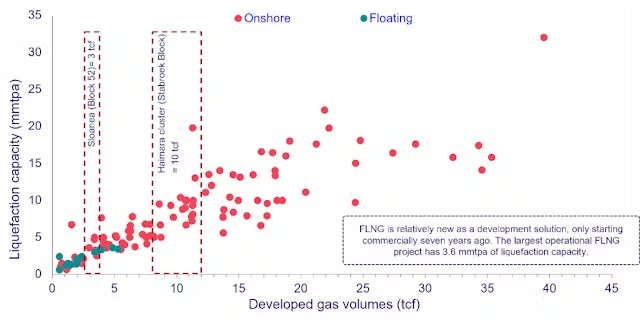
Wood Mackenzie: Guyana and Suriname could provide 12 million tpy of cost-competitive LNG in the 2030s
[Guyana and Suriname: Potential for 12 Million tpy of Cost-Competitive LNG by 2030s]
Guyana and Suriname, two emerging players in the global oil and gas sector, are poised to become key suppliers of liquefied natural gas (LNG) by the 2030s. According to Wood Mackenzie, both nations hold substantial potential to provide up to 12 million tonnes per year (mtpy) of cost-competitive LNG, positioning them as major contributors to the global LNG market in the coming decades.
Resource Base and Production Outlook
Guyana, which has seen rapid oil and gas discoveries in recent years, boasts one of the most promising offshore energy resources in the world. The Stabroek Block, operated by ExxonMobil, has been the cornerstone of its oil and gas development, with significant natural gas reserves accompanying oil finds. Suriname, its neighbor, also holds substantial offshore reserves, particularly in the Block 58 area, where ExxonMobil and other operators have made substantial gas discoveries.
Both countries’ natural gas reserves are expected to grow substantially by the 2030s. Wood Mackenzie estimates that Guyana’s natural gas production could rise to around 6-8 million tonnes per year by the early 2030s, with Suriname contributing a similar amount. The region’s offshore fields, which have already demonstrated strong production potential, are expected to attract further investment in infrastructure, including LNG export terminals.

Cost Competitiveness
The key to Guyana and Suriname’s rise as LNG exporters will be their ability to produce and export LNG at competitive prices. The cost structure in these countries is particularly favorable, thanks to the relatively low-cost gas extraction from offshore fields, which benefit from high productivity and low breakeven costs. Additionally, the proximity of both nations’ fields to major global LNG markets such as Europe and Asia will reduce transportation costs, enhancing their competitive edge.
Wood Mackenzie predicts that the combination of low-cost upstream resources, efficient production methods, and a growing infrastructure base will enable both countries to offer LNG at prices that compete with other major exporters like the United States and Qatar.
Challenges and Opportunities
While the potential is significant, there are challenges to overcome. Both Guyana and Suriname will need to invest heavily in infrastructure, such as LNG terminals and pipelines, and navigate regulatory and environmental hurdles. However, their vast energy resources, combined with international interest in securing low-cost, reliable LNG supplies, create a strong foundation for future growth.

Leave a Reply